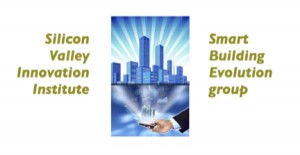Actionable Vantage Point or AVP, is a point of view from which a problem can be solved. There always exists an Actionable Vantage Point!
We will describe below how to find the AVP in a domain independent manner, which you can skip to now if desired, but a bit of voluntary context in the form of background and rationale is provided.
As accomplished as humans are, in comparison to our vast potential we are still underachievers operating nowhere near our limits. We have a long way to go as things are rarely as good as we can imagine them being. Innovation describes our natural tendency to iterate, evolve, adapt and improvise. It is a primary mechanism for realizing our potential.
DECLARATION – HUMANS ARE NATURAL INNOVATORS.
DECLARATION – MUCH INNOVATION IS INVOLUNTARILY.
DECLARATION – IF YOU ARE AN INNOVATOR, ALL PROBLEMS HAVE SOLUTIONS.
Innovation is one extremely important distinguishing characteristic of a conscious person, organization, nation or culture. For if you can innovate, you never need be stuck.
Humans are Natural Innovators
All children believe themselves to be creative, yet few adults do. Why this is so, is discussed elsewhere, but does it seem possible that we can lose forever something we were born with? Or is it more likely that things happened to us to make us forget. Innovators are simply those who either did not forget, or rediscovered within themselves that they can innovate and then got hooked on it.
When faced with a problem, it is natural to try to do something to solve it and to keep trying different things until we do. We either adapt or fail. Humanity had to evolve or die. Like it or not, these are still the rules. It is not a big deal until we wrap fancy language around it and put it out of bounds, but for business it is very clear – Innovate or Die.
Involuntary Innovation
This is why innovation is involuntary, because people and countries and companies all want to live. We do it as a matter of survival. Innovation is not something you have to tell people to do or pay them more to do, it is what we all do unless prevented. And we are certainly prevented most of the time because almost everyone is afraid of change. When you have an insight and throw some new ideas on the table it is quite amazing to see how much resistance there is. So kids who stop receiving positive reinforcement for being creative naturally, give it up when they find they fail exams or get fired for it.
For some of us who got such a kick out of manifesting what was not there before, it becomes an involuntary behavior which usually gets us in trouble and very occasionally gets us famous. But the act of innovating, creating, adapting, improvising or iterating simply feels good when there is no one to tell you to not do it, and is a survival behavior although most times it is resisted.
Those of you have been involuntary innovators have the arrows in your back and other scars to show for it, but yet you persist for a very simple reason – it makes sense and feels good. Which is why….
Innovators are Unstoppable (or all problems have solutions)
Returning to the Actionable Vantage Point, involuntary innovators have an unassailable belief.
There is no problem they can not act upon, so they never have to be paralyzed.
It all depends on how you look at things and here we take a short digression into the nature of the universe. The universe is a very big place and it is of great dimension, which has many consequences, one of which is two perfectly rational and reasonable people can can have what appear to be opposing points of view. In fact you yourself can internally have opposing points of view which is usually a good reason to stop and figure out what is what.
Here is a meta way to look at the problem. Whether the universe is simply too dimensionally vast to comprehend, or there are an infinite number of parallel universe waiting to manifest, we always have the ability to chose a point of view (POV). A perspective or a lens though which to view any given situation. In fact we often have several available to us. This is sometimes called being creative and sometimes called being wise and either way it is demanded that we adapt by making a choice which can also be called manifesting if the choice is not particularly visible to those around you. Do you bring it into being or was it already there? Well this does not matter, but the place from which you can see it can be called an Actionable Vantage Point.
The most important thing to remember, is having a bias for action is having a bias for survival and it is good to consciously know, there is a vantage point from which something can always be done.
The AVP Method
You have a problem, or a situation, sometimes called “an opportunity”. Assuming you do not know what to do (yet) or perhaps know too many different things to do, in either case the problem is the same – you stop to figure it out, and here is how this involuntary innovator does it.
1) Zoom out to a perspective far enough that the problem no longer appears to be a problem. This takes the pressure off and although it can take effort to gain detachment, it gets easier over time when you cultivate the habit.
2) Slowly begin to zoom back in to the point where you can see, at the same time, where you are and where you want to be (a potential solution). Yes this implies there is a solution to be seen, and I assume you there always is, but the key is too zoom slowly enough that you do not zoom right by it and end up back so close to the problem that you are overwhelmed by it.
…. Now here is where you may say “if I knew the solution I would not be stuck” and toss the approach away and go ahead if it makes you feel good, but the AVP does work and the secret is you do not have to know how to accomplish getting to the solution, you just have to see the solution. In order to do this you may have to have some faith that there is one. Faith is another word many people who pride themselves on being rational, do not like either so you may again be wanting to give up. However, I feel a need to point out to you that none of us are entirely (or even primarily) rational, linear and hierarchical, even though we may have adopted these beliefs to cope with just how dimensionally vast the universe is.
You may even say, “wait a minute the universe is at least causal even if it is not rational” and I would counter this is a case of reverse causality, meaning you start with the answer and then figure out what the steps to get there are.
I completely understand you may be resistant to this notion, as many of my teachers were, beginning at an early age and persisting through all of the way through decade of higher education and beyond. But I can assure you there are many of us who begin with the answer, and then figure out how we got there. And we are sometimes called inventors or composers and lot of the time we are called much worse because we tend to make things difficult for those around us until we get to the solution, when things get much easier and then people say “why didn’t you tell me what you meant?”
If this sounds like a lot more commentary than steps, let me remind you the recipe for baking anything at all can be really simple too; get water, flour and maybe some eggs, sugar and baking soda or powder, then mix them up and apply heat it until it is done. The bottom line is, it is very simple if you know how to bake and innovating is also very simple if you know how to innovate.
Separating desired results and steps makes the process less linear which permits breakthroughs to more easily occur.
To complete the process of determining the AVP, after zooming out to gain some distance, and then zooming in just the right amount, to see both where you are and where you would like to be, then you can perform the third and final step. Zoom in closer so you can see potential paths connecting the two. Choose one and start down it.
Three AVP Steps:
You are in a helicopter.
- Gain enough altitude for the problem to not look like a problem. (not more)
- Reduce elevation until you can just see where you are and where you want to be. (not closer)
- Hover over solution, fly toward where you are until you find a path or paths connecting the two.
This is an actionable vantage point – take action!

